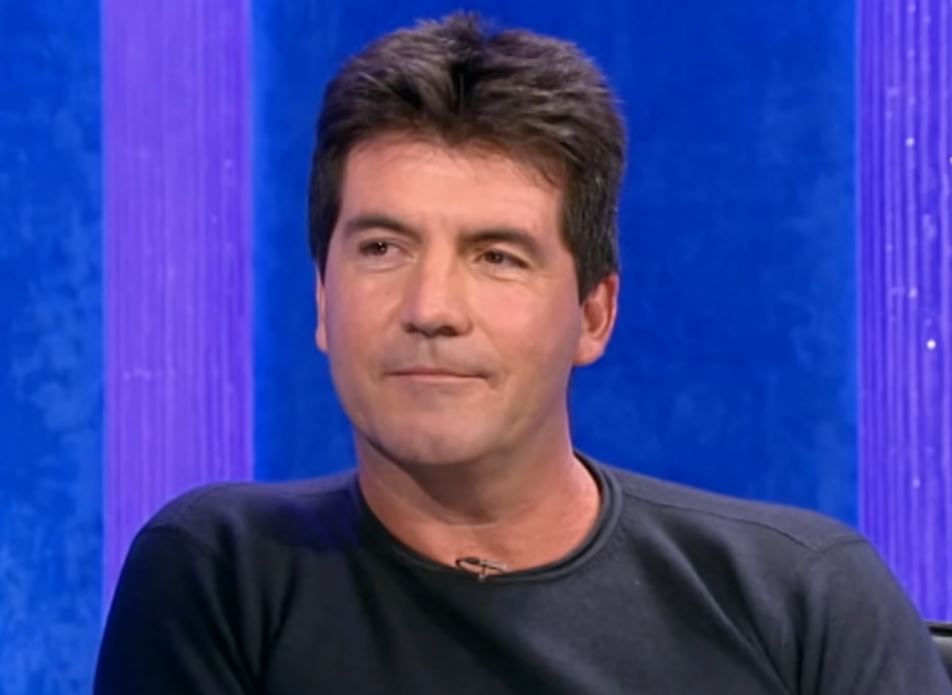
Credit: The Michael Parkinson Channel
Before he clarified with remarkable clarity that migraines, not mysterious illnesses, were the cause, fans conjectured about hidden illnesses. He had to miss a few sessions due to these excruciating headaches brought on by the constant lights used for filming, but he never wavered in his dedication to the show. His candor was incredibly successful in reducing anxiety and refocusing the discussion on health issues that are frequently hidden from view.
Cowell transformed necessity into necessity by wearing the red-tinted glasses, which blocked out harsh light that would otherwise cause crippling pain. Although the shades were as functional as a football player’s protective headgear, some people thought they were an odd fashion choice. His frank explanation served as a reminder to the audience that the most effective way to deal with physical challenges is frequently adaptation. Despite his humorous observation that no one would ever imitate his eyewear style, he gave the accessory symbolic weight by making it a visual representation of resiliency.
| Category | Details |
|---|---|
| Full Name | Simon Phillip Cowell |
| Date of Birth | October 7, 1959 |
| Place of Birth | London, England |
| Age | 65 (as of 2025) |
| Nationality | British |
| Profession | Music executive, television producer, talent show judge |
| Known For | The X Factor, Britain’s Got Talent, America’s Got Talent, American Idol |
| Health Challenges | Migraines, broken back (2020), broken arm (2022), sepsis, heart attack |
| Family | Partner Lauren Silverman, son Eric Cowell |
| Current Status | Active on BGT, managing migraines with tinted glasses |
His health issues weren’t the first. Following a serious electric bike accident in 2020, Cowell broke his back, necessitating surgery and the placement of a metal rod. He suffered a concussion and a broken arm in another accident two years later, raising fears that his adventurous side may be colliding with aging. The list appears overwhelming when you consider his history of sepsis and even a heart attack. But each time, he bounced back with a new perspective, improved fitness habits, and determination.
Through a more mindful approach to walking, Pilates, and cycling, Cowell has been able to significantly lessen the impact of those previous injuries. Compared to peers who continued to engage in harmful routines, his transformation was especially creative. Family life was also very important. His viewpoint was altered by his son Eric, who drew him away from his workaholic inclinations and toward a more balanced way of living. He openly acknowledged that pressure and deadlines dominated his life prior to becoming a father. His optimism is now anchored by family moments.
The migraines themselves are a reflection of contemporary celebrity—bright lights can both help and hurt careers. Flashing stage lights produce breathtaking spectacles for performers, but for Cowell, the same intensity meant suffering. His solution, which included pacing work, wearing glasses, and changing lifestyle, was incredibly durable and useful. Cowell’s candor strikes a chord, much like Elton John’s transition from unhealthy habits to a healthy lifestyle or Sharon Osbourne’s candor regarding her cancer diagnosis. These similarities highlight the ways in which public personalities shape broader cultural perceptions of vulnerability and health.
Supporters reacted with remarkable compassion. Social media was inundated with messages praising his return, including humorous memes, prayers, and words of encouragement. This online chorus demonstrated how fandom has significantly increased in empathy, moving from admiration from a distance to concern for the individual. By publicly discussing his migraines, Cowell normalized a condition that is frequently disregarded, demonstrating how powerful people can lessen the stigma associated with problems that many people silently face.
Audiences were reassured in recent days by his return to Britain’s Got Talent alongside Alesha Dixon, Bruno Tonioli, and Amanda Holden. It was a sign of endurance rather than weakness to see him laughing, leaning forward in judgment, and slamming the golden buzzer. Despite ongoing health issues, his energy is incredibly dependable. Each public appearance served as evidence that his spirit had not been dampened by setbacks.
The interest in whether Simon Cowell is ill also reflects society’s obsession with the weaknesses of influential people. While Céline Dion’s illness continues to make headlines, Steve Jobs’ health was once a topic of discussion on a global scale. Under scrutiny, Cowell also came to represent how icons deal with human limitations. What sets his story apart, though, is its unwavering optimism—he doesn’t allow failures to take center stage.
His television empire survived absences by forming strategic alliances with producers and other judges. This combined power demonstrated how effective his strategy was, mirroring the way robust systems operate in other sectors. The structure endures even after a leader leaves, demonstrating that legacy is based on teamwork.
Unlike casts or crutches, migraines are invisible, but they have the power to end lives. Cowell made his experience a source of unity by being open to sharing unvarnished explanations. He demonstrated that openness itself is especially advantageous by encouraging others to ask for assistance rather than conceal difficulties.

